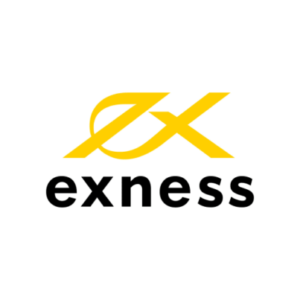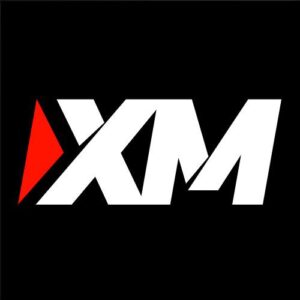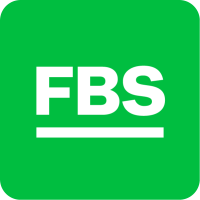
The Ultimate Guide to Forex Automated Trading: How to Use Technology to Maximize Your Trading Potential
Understanding Forex Trading: A Brief Overview
Benefits of Automated Trading
How Automated Trading Works
Selecting the Right Automated Trading Software
Setting up and Configuring Your Automated Trading System
Essential Technical Analysis Indicators for Automated Trading
Building a Winning Trading Strategy with Automated Trading
Backtesting Your Trading Strategy
Understanding and Managing Risk with Automated Trading
Optimizing Your Trading Performance with Automated Trading
Common Automated Trading Mistakes and How to Avoid Them
Real-world Examples of Successful Automated Trading Systems
Legal and Regulatory Considerations for Automated Trading
The Future of Automated Trading: What to Expect
Tips and Tricks for Success with Automated Trading
Forex trading can be a highly profitable venture, but it can also be incredibly time-consuming and challenging to master. This is where automated trading comes in – utilizing technology to execute trades based on a pre-programmed set of rules and algorithms.
“The Ultimate Guide to Forex Automated Trading” is a comprehensive guide designed to help both novice and experienced traders maximize their potential using automated trading systems. Whether you’re looking to reduce the amount of time you spend monitoring the markets, eliminate emotions from your trading decisions, or simply improve your overall performance, this book will provide you with the knowledge and tools you need to succeed.
In this book, we’ll start by providing an overview of forex trading, and then delve into the benefits and mechanics of automated trading. We’ll explore how to select the right automated trading software, set up and configure your system, and essential technical analysis indicators for automated trading. From there, we’ll cover how to build a winning trading strategy, backtest it, and manage risk.
In addition, we’ll provide real-world examples of successful automated trading systems, discuss legal and regulatory considerations, and provide insight into the future of automated trading. Finally, we’ll provide tips and tricks to help you succeed with automated trading.
With “The Ultimate Guide to Forex Automated Trading,” you’ll learn how to leverage technology to maximize your trading potential and achieve your financial goals.
Chapter 1: Understanding Forex Trading: A Brief Overview
Forex trading, also known as foreign exchange trading, is the act of buying and selling currencies with the aim of making a profit. The forex market is the largest and most liquid financial market in the world, with an average daily turnover of over $6 trillion.
The forex market operates 24 hours a day, 5 days a week, and is primarily traded over the counter, meaning that trades are conducted electronically between traders rather than on a centralized exchange. The most commonly traded currencies are the US dollar, euro, Japanese yen, British pound, Swiss franc, and Australian dollar.
The forex market is heavily influenced by a variety of factors, including economic data releases, political events, and central bank policy decisions. Traders use a variety of technical and fundamental analysis techniques to make trading decisions, with the ultimate goal of buying low and selling high.
While forex trading can be highly lucrative, it is also inherently risky, with the potential for significant losses if proper risk management techniques are not employed. Automated trading can be an effective way to mitigate some of this risk while also improving overall trading performance.
In the next chapter, we’ll explore the benefits of automated trading and how it can help traders achieve their financial goals.
Chapter 2: Benefits of Automated Trading
Automated trading, also known as algorithmic trading, is the use of computer programs to execute trades based on a set of pre-determined rules and algorithms. Automated trading systems can analyze market data in real time and execute trades much faster than a human trader could, which can lead to better trading performance and increased profitability.
There are several benefits to using automated trading systems:
Reduced emotional trading: One of the biggest benefits of automated trading is that it removes emotions from the trading decision-making process. Human traders can be influenced by fear, greed, and other emotions, which can lead to poor decision-making and suboptimal trading performance. Automated trading systems, on the other hand, rely on pre-programmed rules and algorithms, which are not subject to emotional biases.
Increased speed and efficiency: Automated trading systems can analyze market data and execute trades much faster than a human trader could. This can lead to better trading performance and increased profitability, as trades can be executed at the optimal time.
Improved risk management: Automated trading systems can help traders manage risk more effectively by implementing stop-loss orders and other risk management techniques. This can help to minimize losses and protect trading capital.
Backtesting and optimization: Automated trading systems can be backtested and optimized to improve trading performance. Traders can analyze historical market data to identify patterns and trends, and then use this information to improve their trading strategy.
24/7 Trading: Automated trading systems can trade around the clock, which can be particularly beneficial for traders who operate in different time zones or have other commitments that prevent them from monitoring the markets during regular trading hours.
In summary, automated trading can offer significant benefits to forex traders, including reduced emotional trading, increased speed and efficiency, improved risk management, and the ability to backtest and optimize trading strategies.
In the next chapter, we’ll explore how automated trading systems work and the different types of systems available.
Chapter 3: How Automated Trading Systems Work
Automated trading systems use computer algorithms to execute trades based on a set of pre-determined rules and conditions. These systems can be designed to analyze market data in real time and execute trades much faster than a human trader could.
Here’s how automated trading systems work:
Market Analysis: Automated trading systems use sophisticated algorithms to analyze market data, such as price movements, technical indicators, and other market conditions. Based on this analysis, the system can identify potential trading opportunities and generate trading signals.
Order Placement: Once a trading signal has been generated, the automated trading system will place the trade on the trader’s behalf. This can be done through an API connection with the trader’s brokerage account, allowing the system to place trades automatically.
Risk Management: Automated trading systems can implement risk management techniques, such as stop-loss orders, to protect the trader’s capital and minimize losses.
Monitoring and Adjustments: Automated trading systems can monitor trades in real time and adjust the trading strategy as needed. For example, if market conditions change, the system may adjust its parameters to ensure that trades are executed at the optimal time.
There are several different types of automated trading systems, including:
Expert Advisors (EAs): EAs are a type of automated trading system that is designed to run on the MetaTrader platform. EAs can be customized to execute trades based on specific rules and conditions.
Trading Robots: Trading robots are another type of automated trading system that can be customized to execute trades based on specific rules and conditions.
Copy Trading: Copy trading is a form of automated trading where traders can automatically copy the trades of other successful traders.
Social Trading: Social trading is a form of automated trading where traders can follow and copy the trades of other successful traders through a social trading platform.
In the next chapter, we’ll explore the advantages and disadvantages of using automated trading systems.
Chapter 4: Pros and Cons of Automated Trading Systems
Automated trading systems can offer several advantages for forex traders, including reduced emotional trading, increased speed and efficiency, improved risk management, and the ability to backtest and optimize trading strategies. However, there are also some potential drawbacks to using automated trading systems that traders should be aware of.
Here are some of the pros and cons of using automated trading systems:
Pros:
Reduced Emotional Trading: As we mentioned earlier, automated trading systems can help to remove emotions from the trading decision-making process. This can lead to more objective trading decisions and improved trading performance.
Increased Speed and Efficiency: Automated trading systems can analyze market data and execute trades much faster than a human trader could. This can lead to better trading performance and increased profitability.
Improved Risk Management: Automated trading systems can help traders manage risk more effectively by implementing stop-loss orders and other risk management techniques. This can help to minimize losses and protect trading capital.
Backtesting and Optimization: Automated trading systems can be backtested and optimized to improve trading performance. Traders can analyze historical market data to identify patterns and trends, and then use this information to improve their trading strategy.
Cons:
Lack of Flexibility: Automated trading systems rely on pre-programmed rules and algorithms, which can limit their flexibility. Market conditions can change quickly, and automated trading systems may not be able to adapt as quickly as a human trader.
Technical Issues: Automated trading systems can be prone to technical issues, such as connectivity problems, data feed errors, or software glitches. These issues can result in missed trades or other errors.
Over-Reliance on Technology: Traders who rely too heavily on automated trading systems may become complacent and fail to develop their own trading skills and knowledge.
Curve-Fitting: Automated trading systems can be over-optimized to perform well in past market conditions but may not perform as well in future market conditions. This is known as curve fitting, and it can lead to suboptimal trading performance.
In summary, automated trading systems can offer several advantages for forex traders, but there are also some potential drawbacks to consider. Traders should carefully weigh the pros and cons before deciding whether to use an automated trading system.
Chapter 5: Choosing an Automated Trading System
If you’ve decided to use an automated trading system, the next step is to choose the right one for you. There are many different automated trading systems available, so it’s important to do your research and select a system that meets your specific trading needs.
Here are some factors to consider when choosing an automated trading system:
Strategy: Different automated trading systems use different trading strategies, such as trend following, mean reversion, or breakout trading. It’s important to choose a system that aligns with your trading goals and preferences.
Performance: Look for an automated trading system with a proven track record of consistent performance. Be wary of systems that make unrealistic promises or have a history of significant drawdowns.
Customization: Some automated trading systems offer a high degree of customization, allowing traders to adjust parameters and rules to fit their specific trading style. Others are more rigid and offer little room for customization.
Compatibility: Make sure that the automated trading system is compatible with your trading platform and broker. Some systems may only work with specific trading platforms or brokers.
Support: Look for an automated trading system with good customer support. You’ll want to be able to get help quickly if you run into any technical issues or have questions about the system.
Cost: Automated trading systems can vary greatly in cost, from free systems to those that cost thousands of dollars. Consider your budget and choose a system that provides good value for the price.
Reviews and Reputation: Read reviews and do research on the reputation of the automated trading system and its developer. Look for systems with a good reputation and positive reviews from other traders.
Choosing the right automated trading system can take time and effort, but it’s important to find one that fits your trading goals and preferences. Don’t rush into a decision and be sure to test any system thoroughly before using it with real money.
Chapter 6: Backtesting Your Automated Trading System
Before you start using your Forex automated trading system with real money, it’s important to backtest it thoroughly to ensure that it performs as expected. Backtesting involves running the system on historical market data to simulate how it would have performed in real trading conditions.
Here are some steps to follow when backtesting your automated trading system:
Gather historical market data: You’ll need historical price data for the markets you plan to trade in. This data can usually be obtained from your trading platform or a third-party provider.
Create your trading system rules: Enter your trading system rules into your backtesting software. This will typically involve setting up parameters such as entry and exit signals, stop-loss levels, and profit targets.
Run the backtest: Once you’ve set up your trading system rules, run the backtest on the historical data. This will generate a report showing how the system would have performed in the past.
Analyze the results: Review the backtest results to evaluate the system’s performance. Look for metrics such as total profit, win rate, drawdown, and risk-to-reward ratio. These metrics will help you determine whether the system is profitable and whether it meets your risk tolerance.
Optimize your system: If the backtest results are not satisfactory, consider tweaking the system rules and running the backtest again. This process of optimizing the system may take some trial and error, but it’s important to find a system that performs well over a variety of market conditions.
Validate the system: Once you’re satisfied with the backtest results, validate the system by testing it on a demo account or with small amounts of real money. This will help you ensure that the system performs as expected in real trading conditions.
Backtesting is a critical step in the development of an automated trading system. It allows you to evaluate the system’s performance and identify any weaknesses before risking real money. Be sure to test your system thoroughly and optimize it as needed to increase your chances of success in the markets.
Chapter 7: Managing Risk in Automated Trading
Automated trading can be an effective way to take advantage of market opportunities and generate profits. However, it also comes with risks that need to be managed to avoid significant losses.
Here are some tips for managing risk in forex automated trading:
Use proper position sizing: Position sizing refers to the amount of capital you allocate to each trade. Using proper position sizing can help you manage risk by limiting your potential losses. It’s important to avoid risking too much of your capital on any single trade, as a large loss can wipe out your account.
Set stop-loss orders: A stop-loss order is an order that is placed to automatically close a trade if the market moves against you. Setting stop-loss orders can help you limit your potential losses and manage risk.
Diversify your trading strategies: Using multiple trading strategies can help you diversify your risk and reduce your reliance on any one strategy. This can also help you take advantage of a variety of market conditions.
Monitor your system: It’s important to regularly monitor your automated trading system to ensure that it’s performing as expected. This includes reviewing trade logs, analyzing performance metrics, and watching for any unusual behavior.
Avoid over-optimization: Over-optimization occurs when a trading system is too closely fitted to historical market data, resulting in poor performance in real trading conditions. To avoid over-optimization, it’s important to test your system on out-of-sample data and avoid overfitting to historical data.
Be prepared for black swan events: Black swan events refer to unexpected and rare events that can cause significant market disruptions. While these events are unpredictable, it’s important to be prepared for them by having a risk management plan in place.
By following these tips, you can help manage the risks associated with automated trading and increase your chances of success in the markets. Remember, trading always involves some level of risk, but by using proper risk management techniques, you can minimize your potential losses and maximize your potential profits.
Chapter 8: Evaluating the Performance of an Automated Trading System
To evaluate the performance of an automated trading system, you need to track its performance metrics over time. Here are some key metrics to consider:
Profit and Loss: This is the most basic metric and measures the net profit or loss generated by the system over a given period of time.
Win Rate: This measures the percentage of winning trades versus losing trades. A high win rate does not necessarily indicate a profitable system, as it is also important to consider the size of the winning trades versus the losing trades.
Risk-to-Reward Ratio: This measures the ratio of the potential profit to the potential loss for each trade. A system with a high risk-to-reward ratio may be more profitable in the long run, as long as the win rate is not too low.
Maximum Drawdown: This measures the largest peak-to-trough decline in the equity curve of the system. It’s important to monitor maximum drawdown, as it indicates the largest loss that could be incurred while using the system.
Sharpe Ratio: This measures the risk-adjusted return of the system, taking into account the level of risk taken to achieve the returns.
Average Holding Time: This measures the average length of time that trades are held. A longer holding time may indicate a trend-following system, while a shorter holding time may indicate a mean-reverting system.
Market Correlation: This measures the correlation of the system’s performance with the performance of the overall market. A low correlation may indicate that the system is able to generate profits even in volatile market conditions.
When evaluating the performance of an automated trading system, it’s important to consider these metrics in combination and over a long period of time. It’s also important to use out-of-sample testing to ensure that the system is able to perform well in real trading conditions. By carefully evaluating the performance of an automated trading system, you can identify strengths and weaknesses and make adjustments to improve its performance over time.
Chapter 9: Risks of Automated Trading
While automated trading systems can provide many benefits, there are also risks associated with their use. Here are some of the risks to consider:
Technology Failures: Automated trading systems rely on technology, which can be vulnerable to failure. This can result in the system executing trades at the wrong time or not executing trades at all. It’s important to have backup systems in place to prevent losses due to technology failures.
Over-Optimization: Over-optimization occurs when a system is overly tuned to historical data and performs well only in those specific market conditions. In live trading, market conditions may be different, and the system may not perform as well as it did in backtesting.
Curve-Fitting: Curve-fitting occurs when a system is optimized to fit a specific set of historical data, rather than being based on sound trading principles. This can result in the system performing poorly in live trading.
Data Mining Bias: Data mining bias occurs when a system is optimized to fit a large dataset, resulting in a high probability of finding a profitable system purely by chance. It’s important to use out-of-sample testing to confirm the effectiveness of the system.
Broker Risks: Automated trading systems rely on brokers to execute trades, which can introduce additional risks such as slippage and order execution errors.
Market Risks: Automated trading systems are not immune to market risks, such as sudden market volatility or unexpected news events that can result in losses.
It’s important to carefully consider these risks before using an automated trading system. By being aware of the risks, you can take steps to mitigate them and improve the overall performance of the system. It’s also important to use proper risk management techniques, such as setting stop-loss orders and avoiding over-leveraging positions, to minimize potential losses.
Chapter 10: Mitigating Risks in Automated Trading
While there are risks associated with automated trading, there are also steps that can be taken to mitigate those risks. Here are some strategies to consider:
Diversification: Diversifying across multiple automated trading systems can help spread out risk and reduce the impact of any single system’s performance. It’s important to use systems with different strategies and timeframes to ensure true diversification.
Regular Monitoring: Regularly monitoring the performance of automated trading systems can help identify any issues or changes in market conditions that may affect performance. This can help you make necessary adjustments to mitigate risk.
Stress Testing: Stress testing involves simulating extreme market conditions to see how a system performs under those conditions. This can help identify potential weaknesses in the system and allow for adjustments to be made before real market conditions become volatile.
Proper Risk Management: Using proper risk management techniques, such as setting stop-loss orders and avoiding over-leveraging positions, can help minimize potential losses.
Independent Verification: Having an independent third party verify the performance of an automated trading system can provide an unbiased evaluation of the system’s effectiveness.
Backtesting: Backtesting can help identify potential weaknesses in a system’s strategy and provide insights into how the system may perform under different market conditions. However, it’s important to use out-of-sample testing to confirm the effectiveness of the system in live trading.
By taking these steps to mitigate risks, you can improve the overall performance of automated trading systems and reduce the likelihood of significant losses. It’s important to remember that no trading strategy or system is foolproof, and even with the best risk management techniques, there is always a possibility of losing money. It’s essential to carefully consider the risks and benefits before deciding to use automated trading systems.
Chapter 11: The Future of Automated Trading
As technology continues to advance, the future of automated trading looks promising. Here are some developments to watch for in the coming years:
Artificial Intelligence (AI): The use of AI and machine learning in automated trading systems is expected to increase. This technology can help systems adapt to changing market conditions and improve decision-making.
Big Data: The ability to process large amounts of data in real-time is becoming increasingly important in automated trading. With advancements in big data technology, automated trading systems can more effectively analyze market trends and make more informed trades.
Blockchain: The use of blockchain technology in automated trading systems is also on the rise. This technology can help increase the security and transparency of trades and settlements.
Cloud Computing: Cloud computing is making it easier for individual traders and small firms to access sophisticated trading technology without the need for large investments in hardware and software.
Social Trading: Social trading platforms allow traders to follow and copy the trades of successful traders. This can help less experienced traders learn from more experienced traders and potentially improve their own trading performance.
As these and other technologies continue to advance, it’s likely that the use of automated trading systems will become even more widespread. However, it’s important to remember that automated trading systems are not a guaranteed path to profits and come with their own unique risks and challenges.
It’s essential to thoroughly research and evaluate any automated trading system before investing real money. With proper due diligence and risk management techniques, automated trading systems can be a valuable tool for traders looking to improve their performance and efficiency.
Chapter 12: Risks and Challenges of Automated Trading
While there are many benefits to using automated trading systems, there are also risks and challenges that traders should be aware of. Here are some of the most significant ones:
System Failure: Automated trading systems rely on technology, which can sometimes fail or malfunction. A system failure can result in significant losses if trades are executed incorrectly or not at all.
Market Volatility: Automated trading systems can struggle to adapt to rapidly changing market conditions, particularly during periods of high volatility. This can lead to unexpected losses if the system is unable to react quickly enough.
Over-Optimization: Some traders may attempt to “over-optimize” their trading system by tweaking it to perform well in historical data but not necessarily in future market conditions. This can lead to poor performance and unexpected losses when the system is applied to live trading.
Limited Flexibility: Automated trading systems are programmed to follow specific rules and may not be able to adjust to unforeseen circumstances or changes in the market. This can result in missed opportunities or unexpected losses.
Hacking and Cybersecurity: As with any technology, automated trading systems can be vulnerable to hacking and cyber-attacks. Traders must take steps to ensure that their systems are secure and protected from unauthorized access.
It’s important to carefully consider these risks and challenges before deciding to use an automated trading system. Traders should also be aware that no trading system can guarantee profits, and that proper risk management techniques must be employed to minimize losses.
Chapter 13: Choosing an Automated Trading System
If you’ve decided that an automated trading system is right for you, there are several factors to consider when choosing a system. Here are some of the most important ones:
Performance: Look for a trading system with a proven track record of performance in live trading, not just in backtesting.
Transparency: Make sure that the trading system provides clear and transparent information about its strategy and performance.
Support: Choose a system that offers good customer support, including technical assistance and access to knowledgeable staff.
Compatibility: Make sure that the trading system is compatible with your trading platform and brokerage account.
Cost: Consider the cost of the system, including any subscription fees or commissions charged on trades.
Risk Management: Look for a system that incorporates effective risk management techniques, such as stop-loss orders, to minimize potential losses.
Backtesting: Evaluate the system’s performance through backtesting, which involves testing the system’s performance on historical data.
User Friendliness: Choose a system that is easy to set up and use, even for traders with limited technical experience.
Remember that no trading system is foolproof and that all automated trading systems come with their own risks and challenges. It’s important to carefully evaluate any trading system before investing real money and to have a solid understanding of the system’s strategy and risk management techniques. With the right due diligence and careful consideration, an automated trading system can be a valuable tool for improving trading performance and efficiency.
Chapter 14: Conclusion
Automated trading can be a powerful tool for traders looking to improve their trading performance and efficiency. By automating their trading strategies, traders can eliminate emotion from their trading decisions and execute trades more quickly and accurately. However, automated trading also comes with its own set of risks and challenges, including system failure, market volatility, over-optimization, limited flexibility, and cybersecurity concerns.
Before using an automated trading system, it’s important to carefully consider these risks and challenges and to choose a system that is transparent, user-friendly, and incorporates effective risk management techniques. Traders should also be aware that no trading system can guarantee profits, and that proper risk management techniques must be employed to minimize losses.
Overall, automated trading can be a valuable tool for traders when used correctly and in combination with a solid understanding of market fundamentals, technical analysis, and risk management. With the right combination of knowledge and technology, traders can improve their trading performance and achieve greater success in the markets.
Chapter 15: Resources for Forex Automated Trading
There are many resources available to traders who are interested in automated trading. Here are some of the most useful ones:
Trading Platforms: Many trading platforms, such as MetaTrader 4 and 5, offer built-in tools for creating and executing automated trading strategies.
Algorithmic Trading Communities: There are many online communities and forums dedicated to algorithmic trading, where traders can share ideas and learn from each other.
Forex Automated Trading Software Providers: There are many companies that offer automated trading software, such as TradeStation, NinjaTrader, and MultiCharts.
Trading Education: Many trading education providers offer courses and resources on automated trading, such as Udemy, Coursera, and Investopedia.
Market Data Providers: Traders need access to accurate and timely market data to develop and execute profitable trading strategies. Providers such as Bloomberg, Refinitiv, and IQFeed offer comprehensive market data solutions.
Backtesting Software: Backtesting is an important part of developing an effective automated trading strategy. Backtesting software, such as Amibroker and TradingView, allows traders to test their strategies on historical data.
Trading Coaches and Mentors: Experienced traders and coaches can provide valuable guidance and support to traders looking to develop and implement automated trading strategies.
By utilizing these resources, traders can gain the knowledge and tools necessary to successfully develop and execute automated trading strategies. However, it’s important to carefully evaluate any resource before using it and to always keep in mind the risks and challenges associated with automated trading.
Conclusion:
Automated trading can be a powerful tool for traders looking to improve their trading performance and efficiency. By eliminating human emotions and executing trades based on pre-defined rules, automated trading systems can help traders execute trades more quickly and accurately.
However, it’s important to understand that automated trading systems come with their own set of risks and challenges. System failure, market volatility, over-optimization, limited flexibility, and cybersecurity concerns are just some of the risks associated with automated trading. Traders must be aware of these risks and take measures to mitigate them.
Before choosing an automated trading system, traders must carefully evaluate its features, transparency, and user-friendliness. They must also ensure that the system employs effective risk management techniques and aligns with their trading goals and strategies.
Traders should also consider combining automated trading with other trading methods, such as manual trading, to achieve a diversified trading approach. By combining different trading methods, traders can minimize their risks and improve their overall trading performance.
Finally, traders must continually educate themselves and keep up-to-date with the latest trends and developments in automated trading. By utilizing the available resources and staying informed, traders can successfully develop and execute profitable automated trading strategies.
Name
Details
Rating
Regulation: CySEC, FCA, DFSA, FSCA, FSA, CMA
Founded: 2008
Founders: Petr Valov, Igor Lychagov
Year Founded : 2008
Deposit Methods: VISA, MasterCard, Neteller, Skrill, WM, PM, Crypto (MORE)
Leverage: 1:30 | 1:500
Regulation: CySEC, FCA, DFSA, FSCA, FSA.
Min. Deposit: 5 US$
Min. Withdraw : 5 US$
HQ: Sydney, Australia
Platforms: MT4, MT5, ctrader, web trading
Found in: January 30, 2007
Deposit Methods: Bank Wire (BankTransfer), VISA, MasterCard, Neteller, Skrill, WM, PM, Crypto
Year Founded : 2010
Cryptocurrencies:
 Yes
YesDeposit Methods: Local Deposit, Bank Wire (BankTransfer), VISA, MasterCard, Neteller, Skrill, WM, PM, Crypto, USDT
Year Founded : 2010
Cryptocurrencies: (5+) Bitcoin, Litecoin, Ethereum
Deposit Methods: Local Deposit, Bank Wire (BankTransfer), VISA, MasterCard, Neteller, Skrill, WM, PM, Crypto, USDT (MORE)
Year Founded : 2009
Cryptocurrencies:



Deposit Methods: Bank Wire (BankTransfer/SWIFT), VISA, MasterCard, Alipay, Bitcoin, Bitcoin Cash, Boleto, Ether/Ethereum, Litecoin, Local Bank Deposits, M-Pesa, Mobile Money, Monero, PerfectMoney, Ripple, WebMoney
Year Founded : 2009
Cryptocurrencies:



Deposit Methods: Local Deposit, Bank Wire (BankTransfer), VISA, MasterCard, Neteller, Skrill, WM, PM, Crypto, USDT
Year Founded : 2009
Cryptocurrencies:



Deposit Methods: Bank Wire (BankTransfer/SWIFT), VISA, MasterCard, Alipay, Bitcoin, Bitcoin Cash, Boleto, Ether/Ethereum, Litecoin, Local Bank Deposits, Mobile Money, PerfectMoney, WebMoney, USDT
Year Founded : 2011
Cryptocurrencies: (25+) Bitcoin, Litecoin, Ethereum
Deposit Methods: Bank Deposit, VISA, awepay, Bitcoin, FasaPay, Local Bank Deposits, Local Bank Transfers, Neteller, paytm, Skrill, UnionPay, USDT
Leverage: 1:20 | 1:500
Regulation: CySEC, FCA, DFSA, FSCA, FSA.
Min. Deposit: 50 US$
Min. Withdraw : 50 US$
HQ: Australia, Cyprus, and the UK.
Platforms: MT4, cTrader, web trading
EAs/Robots: ✅ Yes | News Trading: ✅ Yes | Scalping: ✅ Yes
Cryptocurrencies: 20+) Bitcoin, Litecoin, Ethereum
Deposit Methods: Local Deposit, Bank Wire (BankTransfer), VISA, MasterCard, Neteller, Skrill, Crypto. USDT
Leverage: 1:20 | 1:500
Regulation: CySEC, FCA, DFSA, FSCA, FSA.
Min. Deposit: 100 US$
Min. Withdraw : 100 US$
HQ: Cyprus, the UK, Australia, and the United States.
Platforms: MT4, cTrader, web trading
EAs/Robots: ✅ Yes | News Trading: ✅ Yes | Scalping: ✅ Yes
Cryptocurrencies: 20+) Bitcoin, Litecoin, Ethereum
Deposit Methods: Local Deposit, Bank Wire (BankTransfer), VISA, MasterCard, Neteller, Skrill, Crypto. USDT
Leverage: 1:20 | 1:500
Regulation: CySEC, FCA, DFSA, FSCA, FSA.
Min. Deposit: 50 US$
Min. Withdraw : 50 US$
HQ: Australia, Cyprus, and the UK.
Platforms: MT4, cTrader, web trading
EAs/Robots: ✅ Yes | News Trading: ✅ Yes | Scalping: ✅ Yes
Cryptocurrencies: 20+) Bitcoin, Litecoin, Ethereum
Deposit Methods: Local Deposit, Bank Wire (BankTransfer), VISA, MasterCard, Neteller, Skrill, Crypto. USDT
Year Founded : 2010
Cryptocurrencies:



Deposit Methods: Local Deposit, Bank Wire (BankTransfer), VISA, MasterCard, Neteller, Skrill, WM, PM, Crypto, USDT
A Forex broker is a financial services company that provides traders with access to the foreign exchange market. The primary function of a Forex broker is to facilitate the buying and selling of currencies by acting as an intermediary between the trader and the market ( Forex BD / BD Forex / ForexBD / ForexBDLTD / Forex bd LTD / @forexbd )..
Forex brokers offer traders a variety of services, including trading platforms, market analysis, and educational resources. They also provide access to leverage, which allows traders to control larger positions with a smaller amount of capital.
Forex brokers can operate in different ways, such as market makers, which set their own bid and ask prices and take the opposite side of their clients’ trades, or as agency brokers, which pass their clients’ orders directly to the market without any intervention.
Choosing a reliable and trustworthy Forex broker is important for traders to ensure that they receive fair and transparent pricing, access to a range of financial instruments, and adequate customer support ( Forex BD / BD Forex / ForexBD / ForexBDLTD / Forex bd LTD / @forexbd )..
Forex brokers play an important role in the foreign exchange market by providing liquidity and enabling traders to participate in the market with ease. Forex brokers offer a wide range of services and tools to traders, including:
Trading Platforms: Forex brokers provide traders with access to trading platforms that allow them to place trades, analyze the market, and manage their trading accounts.
Market Analysis: Forex brokers offer traders access to market analysis, including news, research, and economic data. This can help traders make informed decisions about when to enter or exit the market.
Educational Resources: Forex brokers often provide educational resources, such as webinars, videos, and tutorials, to help traders improve their trading skills and knowledge.
Leverage: Forex brokers offer traders access to leverage, which allows traders to control larger positions with a smaller amount of capital. However, it’s important to note that leverage can increase both potential profits and losses.
Customer Support: Forex brokers provide customer support to help traders with any questions or issues they may have ( Forex BD / BD Forex / ForexBD / ForexBDLTD / Forex bd LTD / @forexbd )..
When choosing a Forex broker, traders should consider factors such as the broker’s reputation, regulation, trading conditions, fees and commissions, and customer support. It’s important to choose a broker that is reliable, transparent, and offers competitive pricing and trading conditions.
Forex brokers provide traders with access to various types of trading platforms, each with its own unique features and advantages. Here are some of the most common types of Forex broker platforms:
MetaTrader 4 (MT4): MT4 is one of the most popular Forex trading platforms, used by millions of traders worldwide. It is known for its user-friendly interface, extensive charting tools, and support for automated trading through Expert Advisors (EAs) ( Forex BD / BD Forex / ForexBD / ForexBDLTD / Forex bd LTD / @forexbd )..
MetaTrader 5 (MT5): MT5 is the newer version of MT4 and offers additional features and improvements, such as more advanced charting tools, additional order types, and support for more financial instruments.
cTrader: cTrader is a trading platform that offers advanced charting tools, support for automated trading, and fast order execution. It is known for its user-friendly interface and customization options.
WebTrader: WebTrader is a browser-based trading platform that allows traders to access the market from any device with an internet connection. It is a popular choice for traders who prefer a simple and easy-to-use platform ( Forex BD / BD Forex / ForexBD / ForexBDLTD / Forex bd LTD / @forexbd )..
Mobile Trading Platforms: Forex brokers also offer mobile trading platforms that allow traders to access the market and manage their positions from their smartphones or tablets. These platforms typically offer a range of features, including real-time quotes, charts, and news updates.
When choosing a Forex broker platform, it’s important to consider factors such as ease of use, charting tools, order types, automated trading options, customization options, and compatibility with your trading style and strategy. Ultimately, the best platform for you will depend on your individual needs and preferences as a trader.
Forex brokers can be categorized into different types based on their business model and the services they offer to their clients. Here are some of the most common types of Forex brokers ( Forex BD / BD Forex / ForexBD / ForexBDLTD / Forex bd LTD / @forexbd ). :
Dealing Desk (DD) Brokers: Dealing Desk brokers, also known as market makers, act as counterparties to their clients’ trades. They provide liquidity to the market by taking the opposite side of their clients’ trades, and may also offer fixed spreads, guaranteed stop-loss orders, and other risk management tools.
No Dealing Desk (NDD) Brokers: No Dealing Desk brokers do not act as counterparties to their clients’ trades, but instead route their orders directly to liquidity providers, such as banks, financial institutions, and other brokers. NDD brokers typically offer variable spreads and faster order execution speeds than DD brokers.
Electronic Communication Network (ECN) Brokers: ECN brokers are similar to NDD brokers, but instead of routing orders to a single liquidity provider, they connect their clients to a network of liquidity providers, which compete to offer the best bid and ask prices. ECN brokers typically charge a commission for their services, but offer some of the tightest spreads and fastest order execution speeds in the market.
Straight Through Processing (STP) Brokers: STP brokers are similar to NDD brokers, but instead of routing orders directly to liquidity providers, they use automated systems to execute orders based on pre-defined trading rules. STP brokers may offer variable or fixed spreads, and may charge a commission or markup on their services.
Hybrid Brokers: Hybrid brokers combine elements of different business models, such as acting as both a market maker and an ECN broker, or offering both fixed and variable spreads. Hybrid brokers may offer a range of services and account types to meet the needs of different types of traders.
When choosing a Forex broker, it’s important to consider the broker’s business model and the services they offer, as well as their reputation, regulation, and customer support. The best broker for you will depend on your individual needs and trading style, as well as the trading conditions and fees offered by the broker.
Forex trading is a popular financial activity that involves buying and selling currencies to profit from the fluctuations in exchange rates. As with any financial activity, it is essential to choose a reputable and regulated broker to ensure the safety of your funds and a fair trading environment. In this article, we will discuss some of the top regulated forex broker houses.
Online forex trading payment methods refer to the various payment options available for forex traders to deposit or withdraw funds from their trading accounts. In the world of forex trading, payment methods play a vital role in facilitating smooth transactions, and it is important to choose a secure and reliable payment method that suits your needs.
Like, Share & Subscribe to Our Official Sites
Contact with Us :
Copyright © 2023 Forex BD
Risk Warning: Trading on financial markets carries risks. Contracts for Difference (‘CFDs’) are complex financial products that are traded on margin. Trading CFDs carries a high level of risk since leverage can work both to your advantage and disadvantage. As a result, CFDs may not be suitable for all investors because you may lose all your invested capital. You should not risk more than you are prepared to lose. Before deciding to trade, you need to ensure that you understand the risks involved and take into account your investment objectives and level of experience.
Disclaimer : Forexbd.ltd is not encouraging anyone to do forex/stock trading, as there are investments and financial risks involved. ForexBD channel or videos are educational and informative. Before deciding to invest in the forex market, you should carefully consider your investment objectives, level of experience, and risk appetite.
#ForexTrading #ForexMarket #ForexBroker #ForexSignals #ForexAnalysis #ForexEducation #ForexPlatform #ForexTools #ForexStrategy #ForexTradingTips #ForexInvesting #ForexNews #CurrencyTrading #OnlineTrading #TradingSoftware #TechnicalAnalysis #FundamentalAnalysis #RiskManagement #MarketResearch #TradingCommunity #ForexTradingSignals #ForexTradingSystem #ForexMarketAnalysis #ForexMarketNews #ForexMarketResearch #ForexTradingStrategies #ForexTrader #ForexTradingSoftware #ForexTradingCourse #ForexTradingForBeginners #ForexTradingPlatform #ForexTradingEducation #ForexTradingAcademy #ForexTradingOnline #ForexTradingCommunity #ForexTradingCharts #ForexTradingIndicators #ForexTradingAccount #ForexTradingCoach #ForexTradingRobot


























